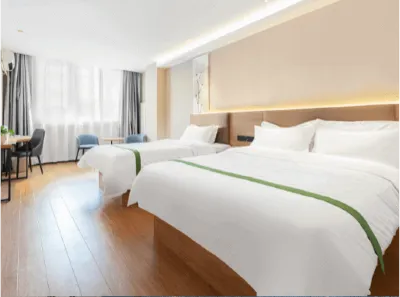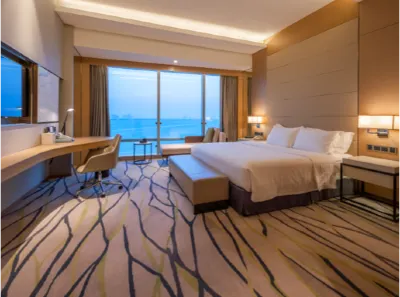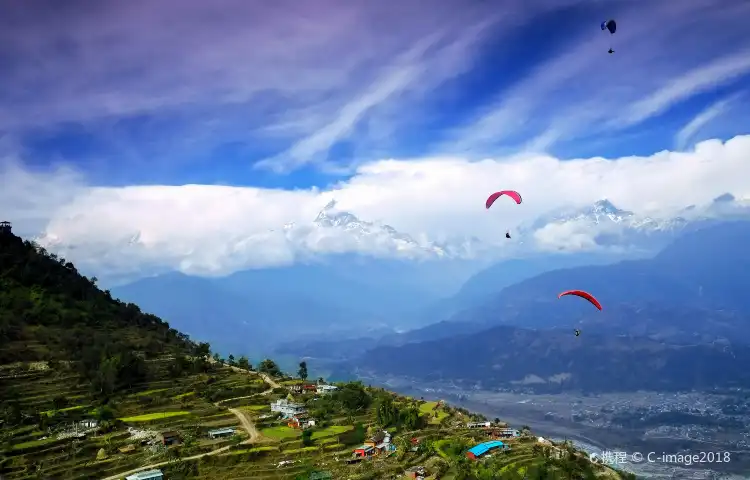
Hotels in Pokhara
Enter your dates for the latest hotel rates and availability.
Scroll down to see hotels
Filter by:
Hotel Star Rating
≤2345
Guest Rating
Amazing 9+Great 8+Good 7+Pleasant 6+We found 230 hotels for you in Pokhara
Trip.com offers top-picked hotels in Pokhara, including reviews, price estimates, and facility details to help you choose the best option for you.
Most Booked
Lowest Price
Closest to Downtown
Highest Rated

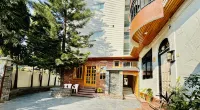
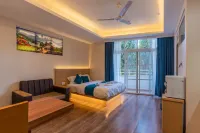
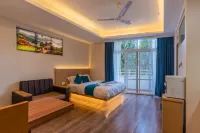
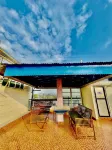
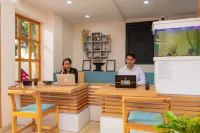
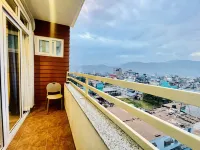
99+
Hotels in Pokhara
Private parking
EV charging station
Priority airport pick-up
"The stay was excellent like before. Host was very nice. This is our second stay and we had great time here."
Amazing
46 reviews
9.7/10
1 night
From MYR 109
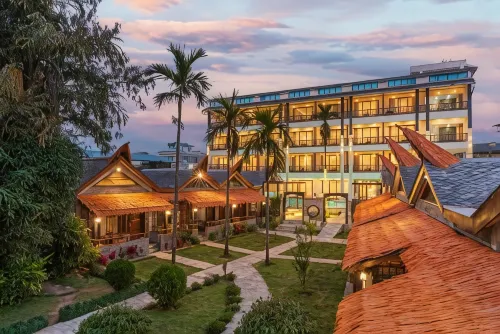
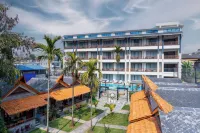
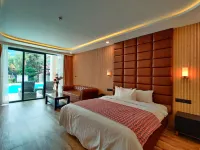
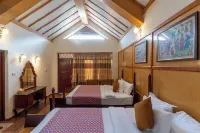
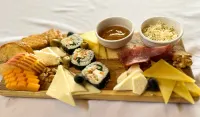
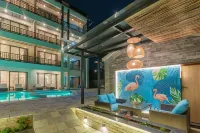
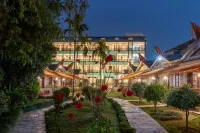
99+
Hotels in Pokhara
 No. 3 of 4-Star Select Hotels in Pokhara
No. 3 of 4-Star Select Hotels in PokharaOutdoor swimming pool
Hiking
Private parking
"An Oasis of Comfort and Warmth in Pokhara
I had an absolutely wonderful stay at Lake View Hotel in Pokhara! The service was excellent all around, with the staff going above and beyond to ensure a seamless and relaxing experience.
The cozy cottage I stayed in was perfect – comfortable, clean, and beautifully designed to provide a sense of calm and privacy. After a long trek, it was exactly the kind of retreat I needed.
The bathtub was spectacular, offering a luxurious way to relax and soothe tired muscles. The extensive breakfast spread was another highlight – from fresh fruits to warm pastries and hearty options, it catered to every taste and set me up perfectly for the day.
The location is ideal, and the serene environment makes it a perfect place to recover after a trek. Whether you're looking to unwind or explore Pokhara, Lake View Hotel provides an unmatched blend of comfort and convenience.
Highly recommended for anyone visiting Pokhara – I’ll definitely be back!"
Very Good
73 reviews
8.9/10
1 night
From MYR 169
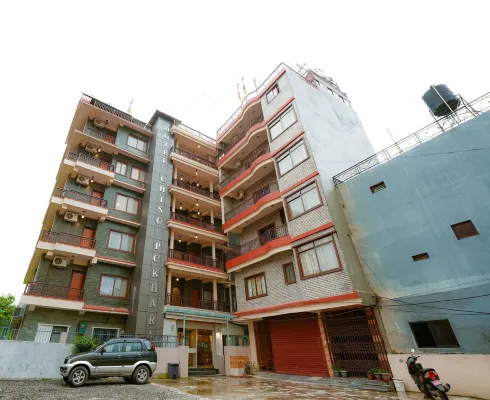
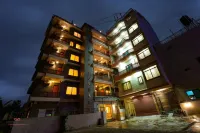
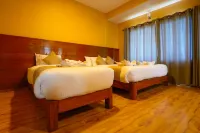
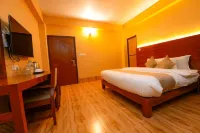
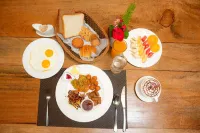
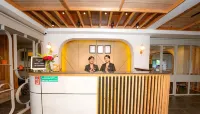
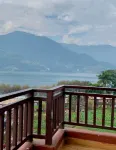
38
Hotels in Pokhara
Sunbathing area
Horse riding
Hiking
"Stayed 2 nights before and after my hiking trip. Good location for all! Staff are super friendly and hotel manager has been very thoughtful to help!
Breakfast is simple but all good and fresh! Enjoyed my stay here, will come back next time if I am in Pokara."
Great
39 reviews
9.2/10
1 night
From MYR 139
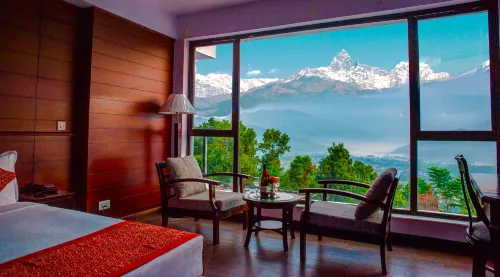
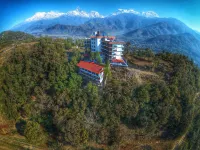
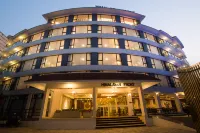
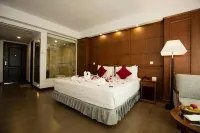
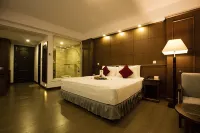
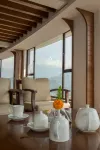
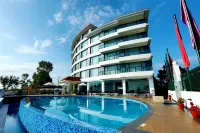
99+
Hotels in Pokhara
 No. 2 of 4-Star Select Hotels in Gandaki
No. 2 of 4-Star Select Hotels in GandakiOutdoor swimming pool
Hiking
Public parking
"Great location our room had a lovely view.breakfast was ok but no fresh juice.taxi from hotel was over priced.hire a motorbike like we did and you will hav more freedom.staff were good and always helpful."
Great
44 reviews
9.2/10
1 night
From MYR 204
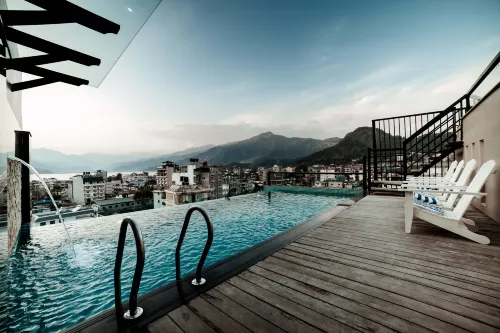
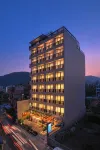
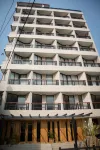
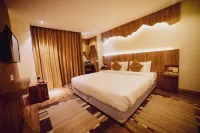
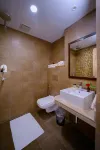
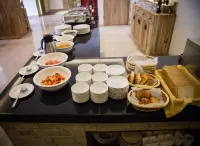
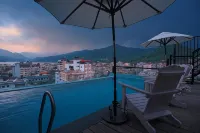
32
Hotels in Pokhara
Outdoor swimming pool
Private parking
Priority airport pick-up
"Tuve una excelente experiencia en este hotel. Todo estaba muy limpio y se nota que es nuevo. La habitación era amplia y la cama extremadamente cómoda, lo que hizo que mis noches de descanso fueran perfectas. El cuarto de baño también estaba en perfectas condiciones, todo nuevo y bien cuidado.
Las instalaciones del hotel son muy buenas, y aunque el desayuno no tiene una gran variedad debido a que no es un hotel muy grande, estaba delicioso y satisfactorio. Además, la piscina y el bar son un gran plus; es un lugar perfecto para relajarse, darse un baño y disfrutar de las impresionantes vistas de la ciudad y las montañas.
Aunque el hotel no está en la calle principal donde están todos los bares y tiendas, estás a casi cinco minutos caminando, lo que lo convierte en una zona más tranquila. Recomiendo este hotel a cualquiera que busque una estancia cómoda y agradable en Pokhara."
Great
53 reviews
9.3/10
1 night
From MYR 119
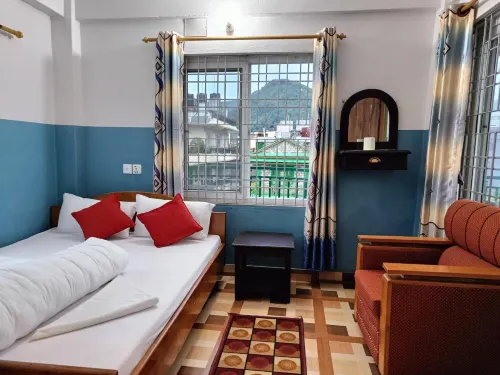
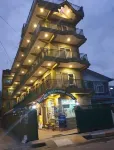
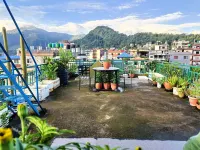
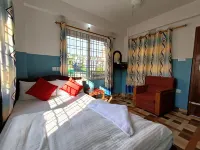
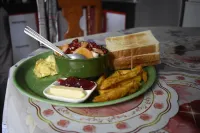
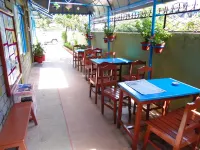
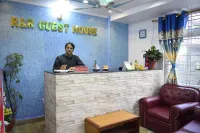
70
Hotels in Pokhara
Private parking
Airport pick-up
24-hour front desk
"The hotel is very clean, the location is very quiet in the residential area, not far from the lake, but the area occasionally jumps, which is unavoidable. The store also has a ticket booking and other itinerary. If you buy the itinerary with them, the service attitude may be better."
Very Good
15 reviews
8.7/10
1 night
From MYR 36
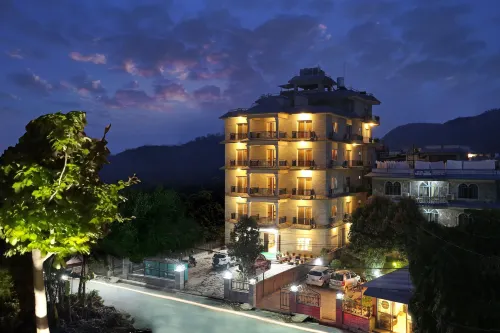
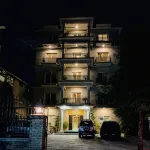
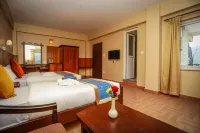
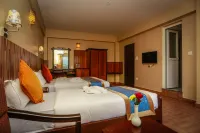
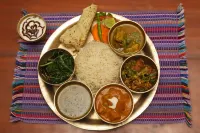
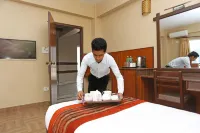
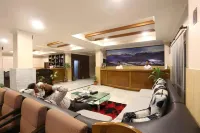
99+
Hotels in Pokhara
Horse riding
Hiking
Spa
"Although my check-in was quite late, I was well received by the hotel staff with no further delay. I enjoyed my stay there with my wife and breakfast was amazing too."
Great
38 reviews
9.1/10
1 night
From MYR 121
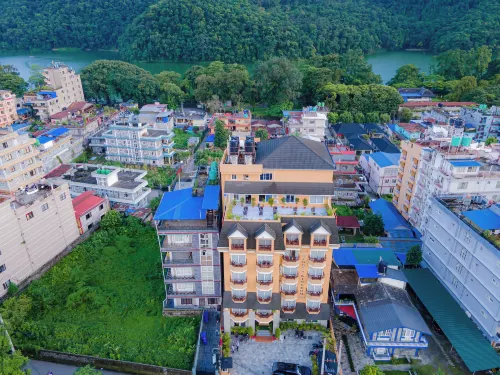
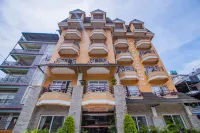
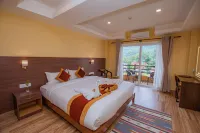
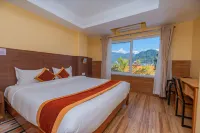
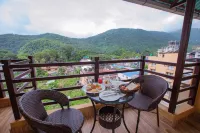
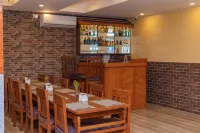
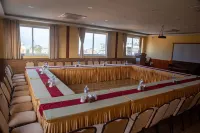
99+
Hotels in Pokhara
Horse riding
Hiking
Spa
"The hotel is not bad for the money. But it's certainly not 4 stars. There is no safe in the room, no disposable slippers. But the bed is nice and the balcony is great. Breakfast is until 9.30 and very simple. Americano is only available for an additional fee. The service is generally normal, but nothing outstanding. It would be more correct to honestly indicate that it is 3 stars, then reality would match expectations."
Amazing
53 reviews
9.4/10
1 night
From MYR 172
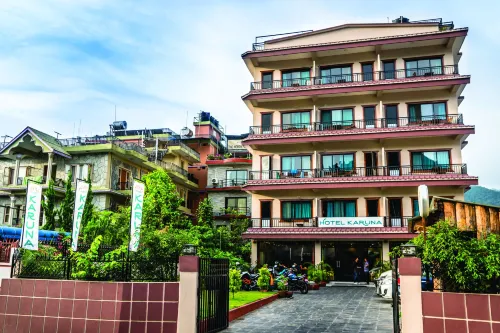
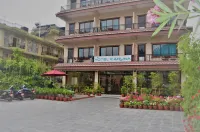
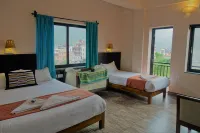
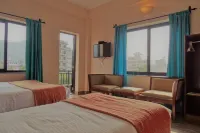
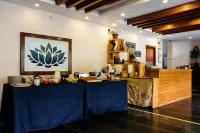
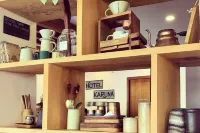
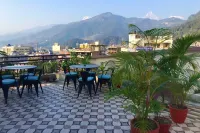
99+
Hotels in Pokhara
Horse riding
Hiking
Private parking
"Friendly and helpful staff. Nice breakfast. Location close to the lake and the many eateries."
Great
70 reviews
9.3/10
1 night
From MYR 105
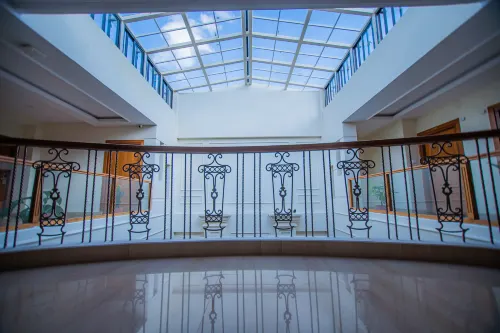
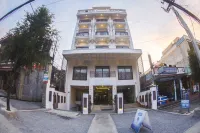
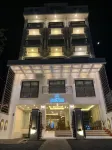
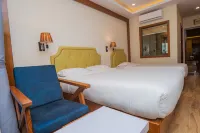
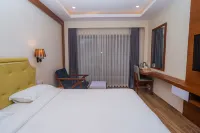
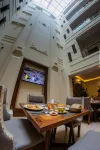
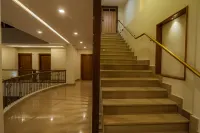
99+
Hotels in Pokhara
Golf course
Horse riding
Hiking
"Facilities: The hotel marked that there was a dryer, so I booked it for this reason. But in fact, there was no dryer. Fortunately, after communicating with Ctrip, it was solved well.
Environment: It is relatively close to the lake, and it takes only a few minutes to walk. You can also see Phewa Lake from the balcony.
Service: There is no Chinese service. Fortunately, the service awareness is very good, and we can still communicate well through the translation software. Breakfast is not a buffet, and you need to order according to the menu"
Great
64 reviews
9.3/10
1 night
From MYR 124
Trending places in Pokhara
Find top attractions and hotspots in Pokhara
Landmarks
Pokhara
229 hotels
Phewa Lake
229 hotels
Peace Temple
229 hotels
Sarangkot
229 hotels
Old Pokhara
229 hotels
Tal Barahi Temple, Pokhara
229 hotels
Browse by hotel type
Immerse yourself in the vibrant atmosphere of Pokhara with our handpicked accommodation options

Premium Hotels in Pokhara
See all
Discover our curated selection of premium hotels in Pokhara for your next stay

No.
1
9.3/10
77 reviewSarangkot Mountain Lodge
Hotel near Pokhara
"Great stay!""Great view"
Select dates to view prices
No.
2
9.7/10
60 reviewDorje's Resort and Spa
Hotel near Pokhara
"Good Location"
Select dates to view prices
No.
3
9.5/10
68 reviewFishtail Lodge by Annapurna
Hotel near Pokhara
"Great stay!""Great service"
Select dates to view prices
No.
4
9.2/10
60 reviewTemple Tree Resort and Spa, Pokhara
Hotel near Pokhara
"Great service"
Select dates to view prices
No.
5
9.6/10
73 reviewHotel Barahi Pokhara
Hotel near Pokhara
"Great service"
Select dates to view prices
No.
6
9.2/10
40 reviewBar Peepal Resort
Hotel near Pokhara
"Great service""Great rooms"
Select dates to view prices
No.
7
9.6/10
28 reviewTemple Himalaya Hotel and Spa
Hotel near Pokhara
"Good Location"
Select dates to view prices
No.
8
9.0/10
32 reviewMountain Glory Forest Resort and Spa, Pokhara
Hotel near Pokhara
"Good Location"
Select dates to view prices
No.
9
9.1/10
42 reviewAtithi Resort & Spa
Hotel near Pokhara
"Good Location"
Select dates to view prices
No.
10
8.6/10
33 reviewHotel Pokhara Grande
Hotel near Pokhara
"Good Location"
Select dates to view prices
No.
11
8.7/10
43 reviewMount Kailash Resort
Hotel near Pokhara
"Good Location"
Select dates to view prices
No.
12
9.5/10
4 reviewTemple Bell Boutique Hotel & Spa
Hotel near Pokhara
"Good Location"
Select dates to view prices
No.
13
8.3/10
40 reviewMajestic Lake Front Hotel & Suites
Hotel near Pokhara
"Clean and tidy""Clean pool"
Select dates to view prices
No.
14
9.1/10
24 reviewSunshine Resort Pokhara - Your Private Paradise
Hotel near Pokhara
"Good Location"
Select dates to view prices
No.
15
9.0/10
58 reviewHotel Sarowar
Hotel near Pokhara
"Good Location"
Select dates to view pricesLatest Reviews for Pokhara hotels
See all
Explore genuine reviews and ratings from real travellers to find the perfect accommodation for your needs.
9.7/10
Amazing
VVicky59This family run hotel was a great find for relaxing a few days after our trek. It is easy walking distance to the lakeside but far enough away that you don't hear the nightclubs when you want to sleep at night. The beds are comfortable and the room is well designed. There are many thoughtful touches: the table attached to the wall by the door let's you have luggage underneath, the fridge is for you to use and not crammed full of mini bar stuff, there is even a beer mug provided. The full hot breakfast has eggs, chicken sausage, potatoes, toast, fresh fruit, juice, and coffee, we were plenty well fed. You can choose to sit out in the garden area for breakfast if you like. The owner and his family were very friendly and helpful with the owner speaking really good English.
9.2/10
Great
GGuest UserThe hotel is on the mountain, near the Peace Pagoda, and the scenery is one of the best in Pokhara. But at the same time, this location is a bit remote, and a one-way taxi ride costs more than 1,000, which is suitable for retreat practice. There are not many staff in the store, but they are very enthusiastic and will help you arrange breakfast, lunch and dinner. The only drawback is that the room was not cleaned during the 2 nights I stayed. 
8.9/10
Very Good
GGuest UserLocated at the center of Lakeside road. Very traditional design but only have two towels in the room and they look a bit dirty. On the official website it’s written “free airport transfer”, we have asked the reception staff and have been told this service need additional charge. We asked the clarification of the service written on the official website but the staff said “I dun know”. The next day morning we reached to the manager, and has been told this service needs to be reserve one day in advanced and only applicable to the reservation through their official website. If we book through any other online platforms this service wont be available. Caz we extended for one more night and didn’t go through the online platforms, I thought we are eligible for the transfer. Well, this is already a middle class hotel in Pokhara but I don’t find it worth with the service. They should anyway inform the customer during check-in. Also not enough training for the front line staff. Lack of consistency.
8.6/10
Very Good
YyangThe room facilities are a bit old, the head of the bed cannot be charged, and the quality of the small bed is very average. The swimming pool is open until 7 o'clock. There is no twin room in the lake view room but a double bed room. There is a free shuttle bus to the lakeside area, available at 10:30 in the morning / 12:30 in the afternoon / 4:30 in the afternoon / 7:30 in the evening For train times, the minibus has air conditioning.
8.4/10
Very Good
GGuest UserThe location is great. Close to the airport, the lake and the bar area. You can enjoy a nice view of the mountains from the room and rooftop However, the room looks a bit worn out.
8.3/10
Very Good
GGuest UserThe look of the hotel does not look close to the photos on the trip.com. The photos are misleading and probably a max 3 stars hotel.
The room I booked does not come with a bathtub which I really wanted after 5 days trekking to ABC. The air-control ran out of battery and took them more than 30 mins to come and fix it. It also took 5 mins before the hot water comes in the morning.
The room and other 4 rooms are in the building that does not have lift and will be a real issue if one comes with big luggage. The building does not look like other 3-4 buildings.
The check out time is noon and you have to pay 50% to late check out.
In conclusion, it is not worth that kind of money for the room I stay.
8.2/10
Very Good
11394098****I was lucky enough to book a room where I could see Phewa Lake while lying on the bed. This alone is worth staying for a few days. I also like the balcony very much. I have the urge to go back and change to a house with a balcony. Unfortunately, it is hard to find a house with a balcony, but nowhere is there such a beautiful and quiet Phewa Lake. It is so convenient and pleasant to go for a walk by the lake in the morning and evening.
8.0/10
Very Good
KKirstin MaryAn excellently located guest house. Just off the main road in central Lakeside yet so calm and peaceful. Quite unbelievable really. Beautiful gardens, spacious rooms and 2 min walk to the best section of the lake in this area.
Pratigya, one of the owners, helped me decide what trekking route to take and recommended some cool extra sections that turned out to be big highlights for me. She helped, advised and booked everything from buses, permits, taxis and masseuses and made sure I had her number for in case I ran into problems on my trek. As a solo female traveler this was extremely comforting. When I come back to do one of the treks that can only be done with a guide I will be contacting her and her husband.
I highly recommend Yeti guest house and especially the owners / hosts.
7.8/10
Good
GGuest UserLocation is not exactly to lake side, room lack slippers, and hair dryer, reception servicing was very poor. Hotel food was ok not wow!!
7.2/10
GGuest UserThe room was very good, The staff and receptionist were very good in nature and provided nice Service to us. The locality of the hotel was very good. The hotel and the rooms were very hygienic. The views from the hotel room was awesome. The room was value for money.
FAQs About Hotels in Pokhara
What popular hotels in Pokhara have parking?
If you're planning on driving to Pokhara, why not stay at
Dahlia Boutique Hotel,Himalayan Front Hotel by KGH GroupandDa Yatra Courtyard Hotel & Resort
? These are all popular hotels with parking lots.
At which popular hotels in Pokhara can I try local foods?
Those who like trying local foods might want to consider staying at
Gantavya Resort,Da Yatra Courtyard Hotel & ResortandHimalayan Front Hotel by KGH Group
. There are lots of famous restaurants serving local dishes near these hotels.
When travelling to Pokhara, which hotels have pools?
Summer is a great season to take your kids or family on a trip to Pokhara.
Himalayan Front Hotel by KGH Group,Bar Peepal ResortandTemple Tree Resort and Spa, Pokhara
are popular hotels with pools.
Of all the hotels in Pokhara, which hotels have the highest user ratings?
When travelling to Pokhara for the first time, many travellers find it difficult to choose a hotel to stay in. According to Trip.com data,
Goldenbirds Homestay, Hotel Visitors Inn, Pokhara and Roamers Inn - Hostel
are popular hotels with high ratings, making them good choices for your trip.
At what hotels in Pokhara can I try local breakfast foods?
A delicious breakfast is a great way to kick start your day. At
Temple Tree Resort and Spa, Pokhara,Hotel OrchidandSarangkot Mountain Lodge
, guests can enjoy Pokhara-style breakfasts.
When going on a business trip to Pokhara, which hotels are the most popular with business travelers?
When it comes to business trips, choosing a hotel with convenient transportation links is important to many guests.
Hotel Sarowar
has convenient transportation links and an inexpensive price. Consider staying here during your trip.
What popular hotels have non-smoking rooms in Pokhara?
Many guests care about the quality of the rooms they stay in and want to ensure that their rooms have fresh, clean air.
Temple Tree Resort and Spa, Pokhara,Da Yatra Courtyard Hotel & ResortandWaterfront Resort by KGH Group
are all popular hotels in Pokhara with non-smoking rooms.
In Pokhara, what popular hotels have free Wi-Fi?
When staying at a hotel, Internet access is important for both vacationers and business travellers.
Da Yatra Courtyard Hotel & Resort, Waterfront Resort by KGH Group and Temple Tree Resort and Spa, Pokhara
are all popular hotels in Pokhara with free Wi-Fi.
What are the most popular hotels in Pokhara?
Whether you're travelling for business or going on holiday, there are many popular hotels to choose from in Pokhara.
Da Yatra Courtyard Hotel & Resort, Trekkers Inn Boutique Hotel Pokhara and Hotel Pristine Himalaya
are all popular hotels to stay at.
What are some popular discounted hotels in Pokhara?
There are many popular hotels in Pokhara. You can find information on discounts and deals here: Trip.com Deals and Promo Codes.
In Pokhara, which popular hotels have gyms?
Based on Trip.com user ratings,
Dahlia Boutique Hotel,Himalayan Front Hotel by KGH GroupandTemple Tree Resort and Spa, Pokhara
are highly rated hotels with gyms.
Pokhara Hotels Information
| Highest Price | MYR 2,188 |
|---|---|
| Lowest Price | MYR 75 |
| Number of Reviews | 4,566 |
| Total Properties | 230 |
| Average Price (Weekdays) | MYR 238 |
| Average Price (Weekends) | MYR 237 |
